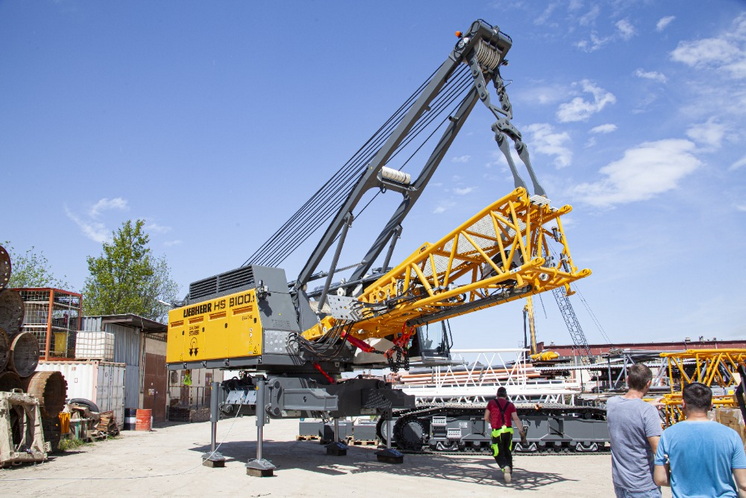Kit version of the HS 8100.1 Liebherr rope excavator

A major advantage of the new generation of Liebherr rope excavators is their “self-tuning” capability. What’s this about? To assemble the previous rope excavators, the operator had to transport an auxiliary crane and other equipment to the machine, including the operator, of course. This new rope excavator is capable of pulling all components “by itself”. This was one of the reasons why the company decided to go for this new generation. The regional representative of Liebherr-Stavební stroje CZ, Ondřej Jílek, described how it works: ‘The machine body is lowered from the sleeper onto the hydraulic cylinders of the chassis. These are controlled by remote control with a cable, so the operator has a good view of the whole operation. The machine is then erected using a set-up roller and harness, the tracks are threaded into the chassis base, secured and finally, the hose is connected.” The machine then turns and stacks the counterweight on top of itself. The reinforced concrete blocks in two columns weigh a total of 26.3 tonnes. Two hydraulic cylinders and four chains are used to pull the weight up. Securing is utilizing pins, this is done conveniently from a position above the weight using a simple lever. It is also part of the supplied machine, just like the binding means, toolboxes, or even the mallet. “It’s unbelievable how much detail the manufacturer goes into. Everything you need to assemble the machine is supplied in two boxes with the machine. It’s a big kit for guys,” adds Ondřej Jílek with a smile.

Installation of the truss boom follows. It consists of weldments made of high-strength steel. On the boom, the main and auxiliary ropes lead to the tip of the boom. Handling it would be very difficult due to its weight, so an auxiliary winch located in the main boom is used to reel it in. After the rope has been wound along the entire length of the boom, it must be anchored at the top. It takes about an hour to set the rope up on such a machine. The rope mechanism works in a similar way to cranes – the more the hook rope is extended, the higher the overall load capacity of the machine
Why Liebherr?
The company has been using Liebherr technology for a long time. They have several cranes from this manufacturer, three large profile drilling rigs and also several older rope excavators. Some Liebherr machines have a service life of over 30,000 motor hours without major breakdowns (for comparison, the equivalent of 1 mth is said to be about 60 km). Generally, valued features include reliability and low operating costs. This is also the case with the Liebherr HS 8100.1 rope excavator. The average consumption for such a large machine is around 15 l/mth, or so it can be read from the Liebherr Power Efficiency app (a publicly accessible digital database that collects data from all Liebherr machines in operation worldwide). The low noise level of the machine also comes as a surprise.

The use of oversized damping elements and materials allows the machine to be deployed even near populated areas where strict safety standards apply. The use of oversized damping elements and materials allows the machine to be deployed even near populated areas where strict safety standards apply. According to the company’s representatives, Liebherr is the only possible choice in the rope excavator category. Also thanks to all the features described above.
Source: Lomy a těžba
